If you’ve done any traveling around New York or New England this summer, you’ve probably come across one of the purple emerald ash borer traps that are hanging from ash trees along roadways – there are over 7,000 of them out there. And if your mind was free to wander, you probably found yourself wondering what the trap looked like up close. What kind of bugs were stuck to it? What did it smell like?
Of course we wondered the same thing, and so you can imagine how pleased we were when forester Mike Scott stopped by the office with a trunk full of traps. Here are some close-up pictures of the traps; in the accompanying captions, we’ll try to convey some of the sensory aspects associated with the trap removal experience.
The white pads suspended in the center of the trap are the bait. They were designed to smell like damaged ash phloem, which to us smelled like a combination of wet leaves and patchouli oil. Someone wondered aloud if any aging hippies had been found ensnared in any of the traps – drawn in by the smell of the patchouli – and while the answer was no, we all had great fun imagining the difficulty one would have putting a person into a tiny sample bottle, and the perplexed looks on the faces of the scientists at APHIS as they scratched their heads and tried to figure out how to classify him. It’s ridiculous, we know, but when you’re dealing with an invasive insect that has killed untold millions of ash trees, you’d better keep your sense of humor or you’re just going to wake up sad every day.
Scott and Virginia Barlow examine the bugs on a trap. Of the thousands of insects Scott’s pored over to date, just 3 bugs looked close enough to an EAB to send away for professional identification. (None came back positive.) “In training for this job, one of the things that surprised me was how varied the insect can look,” said Scott. “They’re not all emerald green; some appear almost black. And there’s quite a bit of variation in size, as well.”
Scott and Barlow discussing coleopteran minutia – a conversation that went right over this photographer’s head.
This picture gives some sense of the molten collection of flies, wasps, moths, fireflies, and ash seeds that coated each trap. There weren’t many buprestids (aka jeweled beetles – the family of insects to which EAB belong) on this particular trap, though the one in the middle there looks close, doesn’t it? Scott and the rest of the trappers will scrutinize their traps over the next few weeks and report any suspicious bugs to APHIS. If there are any positive identifications, the news will break in the next month.


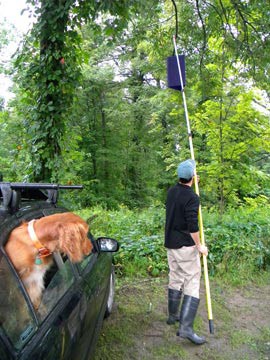
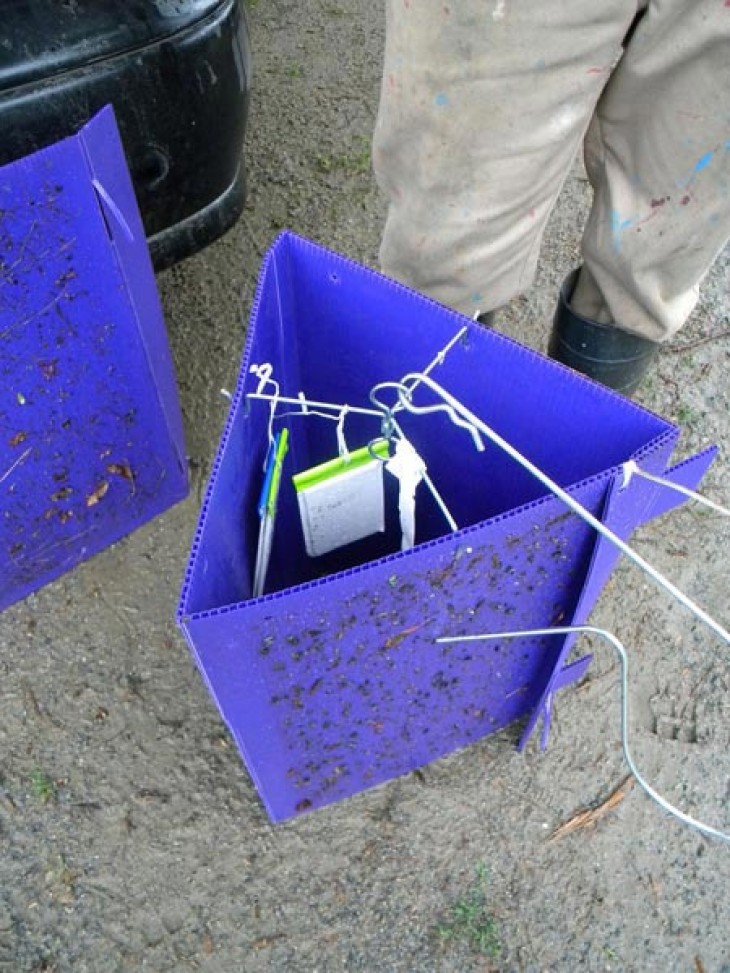
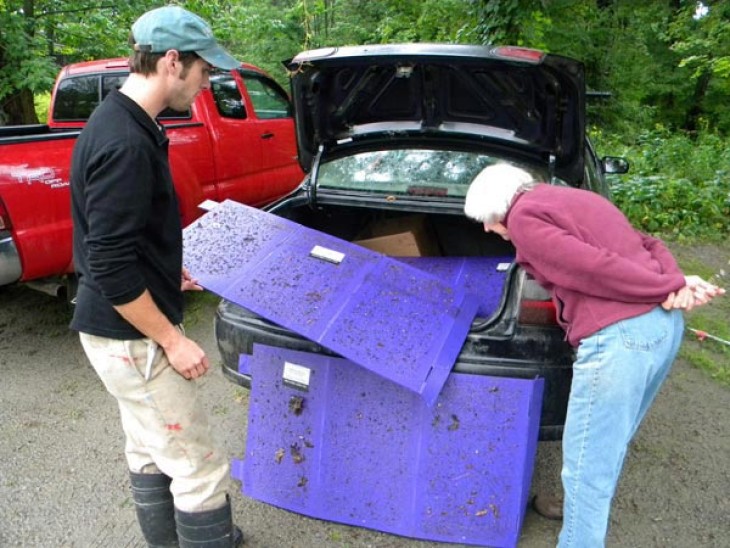
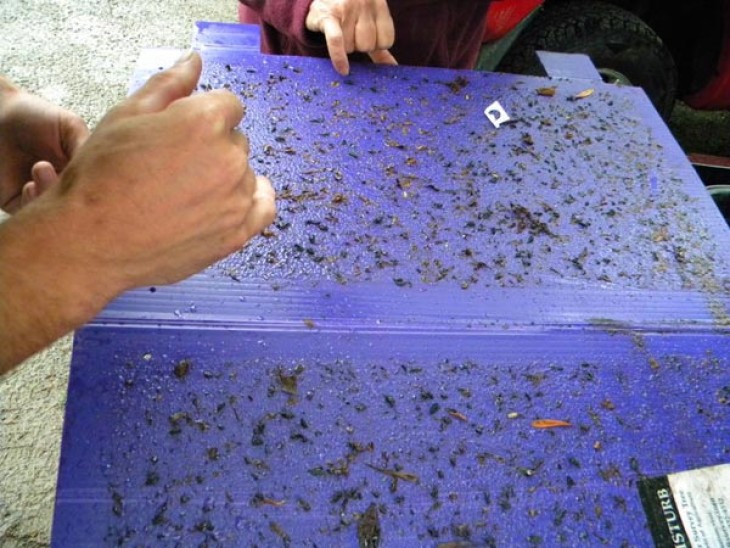

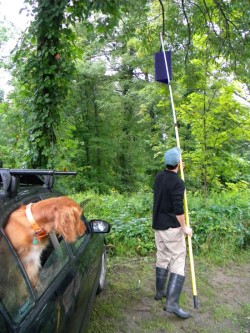


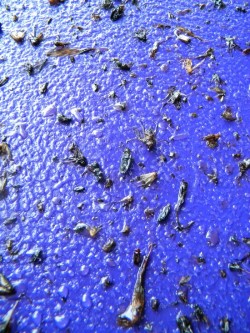
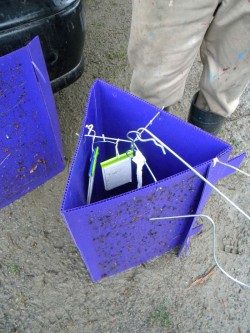
Discussion *